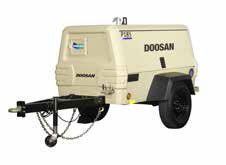|
|
HYDRAULIC |
PNEUMATIC |
|
Contamination Risks |
Risk of hydraulic oil leaks from faulty valves, seals or burst hoses. Hydraulic tools don’t produce exhaust and their power sources can be stationed remotely. |
A very clean system, suitable for food manufacturing processes and other processes which require no risk of contamination. However, they can atomize small droplets of lubricating oil into the surrounding atmosphere. |
|
Movement of Cylinders |
Hydraulic cylinders move more slowly as hydraulic oil is a viscous substance and requires more energy to move. |
Pneumatics offer rapid movement of cylinders and have the great advantage of availability in very small sizes. This is mainly due to air compressor flow rates. Air is very agile and can flow through pipes very quickly and easily with little resistance. |
|
Ability to Change Direction |
Oil must be routed back to the reservoir making them slower to change direction or alter state quickly. |
Cylinders and valves can dump their compressed air straight to the atmosphere when they need to change direction or alter their state quickly. |
|
Working Force |
Hydraulics have more force making them suitable for heavy duty work such as cutting through rock & concrete, driving posts or spikes, or pumping a flooded culvert. |
Pneumatics does not have the potential force that hydraulics has to offer. The lifting or moving of heavy loads is not best suited to pneumatics. |
|
Movement |
Hydraulics can smoothly lift and move loads because the hydraulic oil is not compressible. |
Air can become jerky and spongy as the air pressure fluctuates with cylinder movement or load changes, as it is compressible. In general a much larger pneumatic cylinder is needed to obtain the same force that a hydraulic ram can produce. |
|
Cost and Efficiency |
Hydraulic tools are inherently more efficient, meaning they require less energy to perform the same work as alternative tools, saving time and money. |
In terms of energy costs pneumatics is more costly than hydraulics, this is mainly due to the amount of energy lost through heat production while compressing air. |
|
Noise Levels |
Hydraulic tools are significantly quieter than comparable pneumatic alternatives |
Noise of operating pneumatic tool may disturb surroundings (eg: residential area) |
|
Proportions |
Since compressed oil transfers far more energy than compressed air, nothing packs as much pound for-pound punch as hydraulic. That means hydraulics cans be a smaller, lighter tool design and deliver more power than even the biggest pneumatic alternatives. |
Pneumatics must be larger and heavier to get as much power as a Hydraulic unit. |
Case Study:
Stanley HP28 (Hydraulic) vs 185 Compressor (Pneumatic)



